|
MUSSELS
ABOUT -
HOME - WHALING - A-Z INDEX
Anchovies
| Bass
| Bream
| Catfish
| Clams
| Cod
Coley
| Crabs
| Crayfish
| Eels
| Grouper
| Haddock
| Hake
| Halibut
| Herring
| Jellyfish
Krill
| Lobster
| Mackerel
| Marlin
| Monkfish
| Mullet
| Mussels
| Oysters
| Perch
| Plaice
| Pollock
| Prawns
| Rays
| Sablefish
| Salmon
Sardines
| Scallops
| Sharks
| Shrimp
| Skate
| Sole
| Sprat
| Squid
| Sturgeon
| Swordfish
| Trout
| Tuna
| Turbot
| Whiting
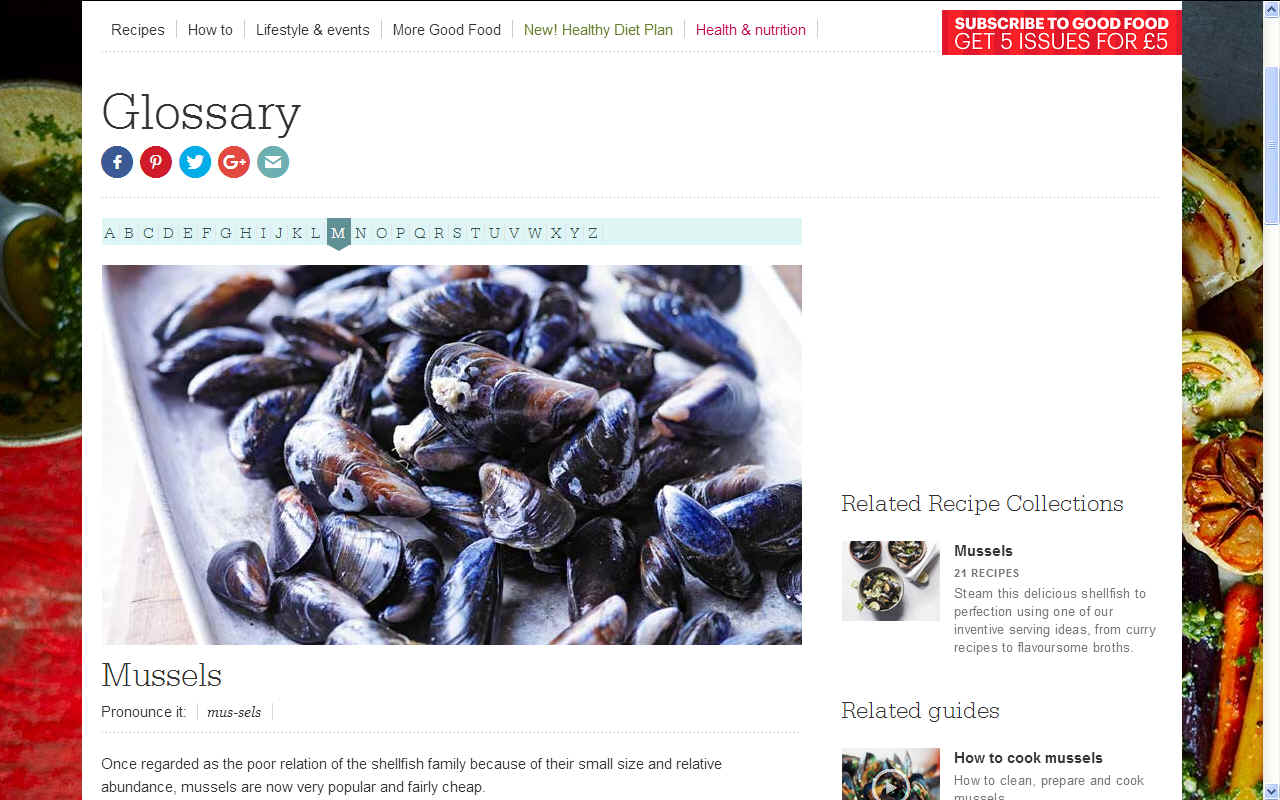
MUSSELS
- Once regarded as the poor relation of the shellfish family because of their small size and relative abundance, mussels are now very popular and fairly cheap.
The most common Blue or European mussels have sleek, shiny shells and tender, nutritious flesh. Like oysters, they are indiscriminate feeders and must be gathered from unpolluted waters. It is because of this that most mussels that you find in supermarkets and fishmongers are farmed.
We
cooked a fish curry with more than 50% inclusion of mussels.
Not only was this dish delicious, but it was also great value
and provided high protein servings for another 5 meals when
frozen, reheated in minutes in a microwave.
In
an effort to feed a
growing population we should look at
alternatives lower down the food chain to increase the ratio
at which protein is harvested from the ocean, so bypassing the
conventional food chain where at each stage of consumption
there are significant losses in the conversion process.
Mussels could play a part in filling the widening gap between falling
fish stocks such as tuna, and higher demand to feed humans.
Unfortunately,
filter feeders cannot escape waste that humans flush into the
oceans, having no choice but to live in the pollution that
humans create, including pharmaceuticals.
The effects of these medications, including cocaine, are not
yet fully understood. Obviously, we need to keep an eye on
this phenomenon.
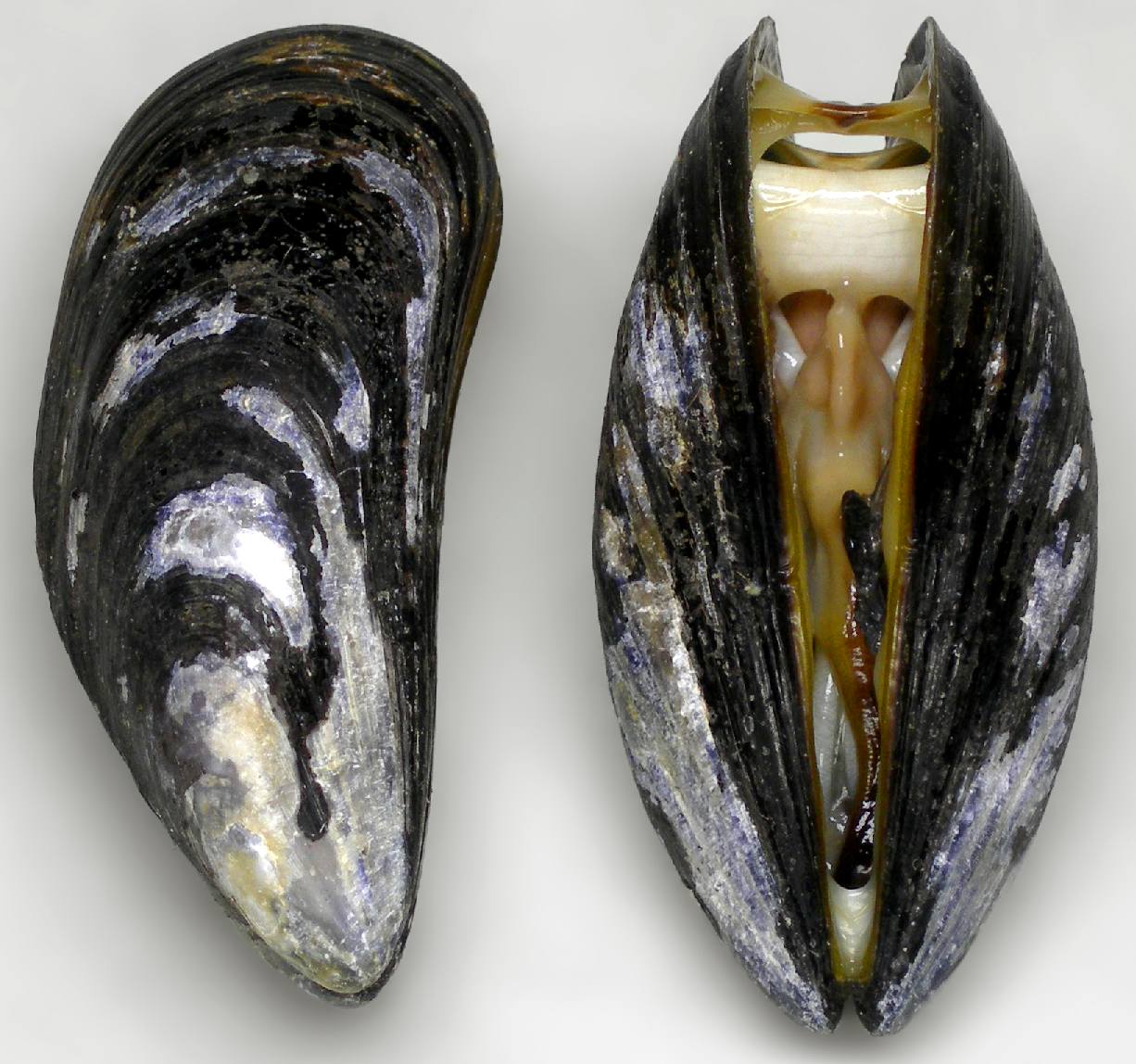
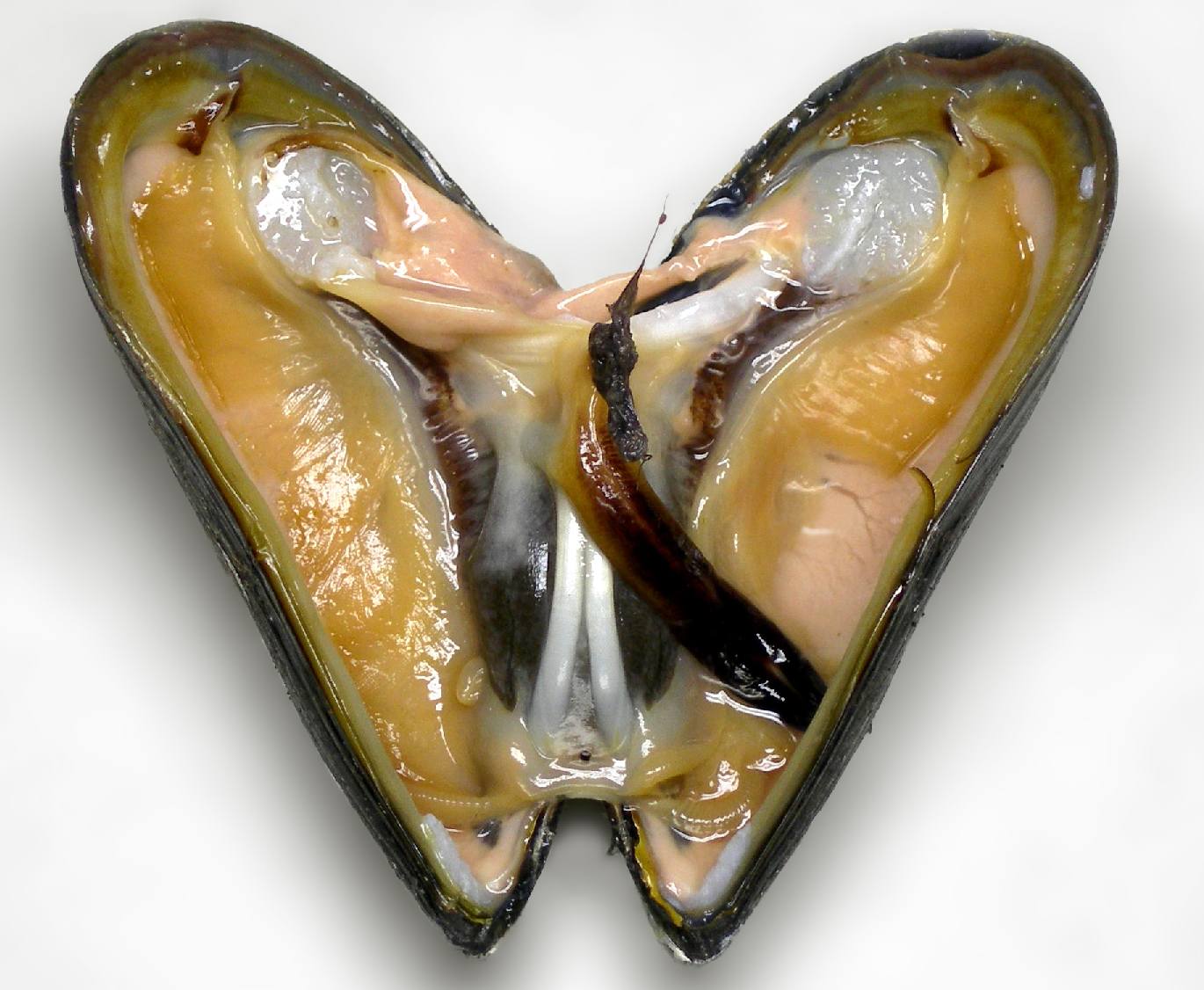
ABOUT
MUSSELS
'Mussel' is the common name used for members of several families of bivalve molluscs, from saltwater and freshwater habitats. These groups have in common a shell whose outline is elongated and asymmetrical compared with other edible clams, which are often more or less rounded or oval.
The word "mussel" is most frequently used to mean the edible bivalves of the marine family Mytilidae, most of which live on exposed shores in the intertidal zone, attached by means of their strong byssal threads ("beard") to a firm
substrate. A few species (in the genus Bathymodiolus) have colonised hydrothermal vents associated with deep ocean ridges.
In most marine mussels the shell is longer than it is wide, being wedge-shaped or asymmetrical. The external colour of the shell is often dark blue, blackish, or brown, while the interior is silvery and somewhat nacreous.
The common name "mussel" is also used for many freshwater bivalves, including the freshwater
pearl mussels. Freshwater mussel species inhabit lakes, ponds, rivers, creeks, canals, and they are classified in a different subclass of bivalves, despite some very superficial similarities in appearance.
Freshwater zebra mussels and their relatives in the family Dreissenidae are not related to previously mentioned groups, even though they resemble many Mytilus species in shape, and live attached to rocks and other hard surfaces in a similar manner, using a byssus. They are classified with the Heterodonta, the taxonomic group which includes most of the bivalves commonly referred to as "clams".

AQUACULTURE
In 2005, China accounted for 40% of the global mussel catch according to a
FAO study. Within
Europe, where mussels have been cultivated for centuries,
Spain remained the industry leader.
Aquaculture of mussels in North America began in the 1970s. In the US, the northeast and northwest have significant mussel aquaculture operations, where Mytilus edulis (blue mussel) is most commonly grown. While the mussel industry in the US has increased, in North America, 80% of cultured mussels are produced in Prince Edward Island in
Canada. In Washington State, an estimated 2.9M pounds of mussels were harvested in 2010, valued at roughly $4.3M.
BIO INDICATORS
Mussels are widely used as bio-indicators to monitor the health of aquatic environments in both fresh water and the marine environments. They are particularly useful since they are distributed worldwide and they are sessile. These characteristics ensure that they are representative of the environment where they are sampled or placed. Their population status or structure, physiology, behaviour or the level of contamination with elements or compounds can indicate the status of the ecosystem.
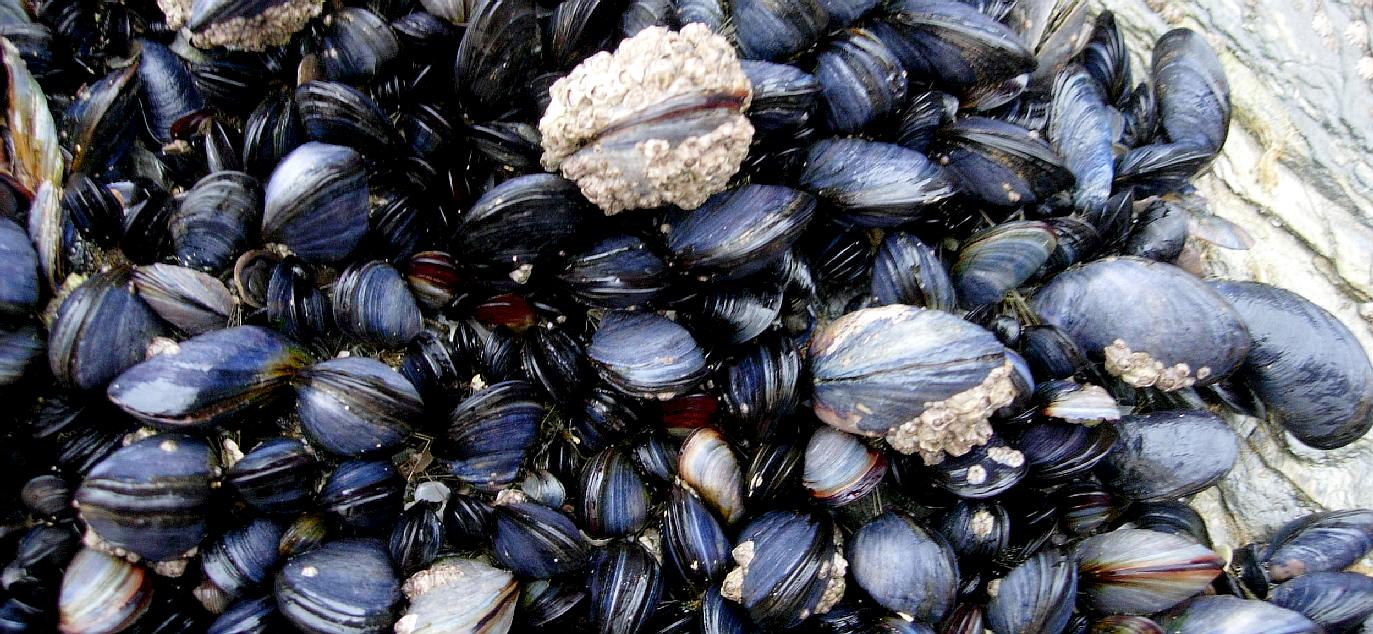
NUTRIENT MIGRATION
Marine nutrient bioextraction is the practice of farming and harvesting marine organisms such as shellfish and seaweed for the purpose of reducing nutrient pollution. Mussels and other bivalve shellfish consume phytoplankton containing nutrients such as
nitrogen (N) and phosphorus (P). On average, one live mussel is 1.0% N and 0.1% P. When the mussels are harvested and removed, these nutrients are also removed from the system and recycled in the form of seafood or mussel biomass, which can be used as an organic fertilizer or animal feed-additive.
These ecosystem services provided by mussels are of particular interest to those hoping to mitigate excess anthropogenic marine nutrients, particularly in eutrophic marine systems. While mussel
aquaculture is actually promoted in some countries such as Sweden as a water management strategy to address coastal eutrophication,
mussel farming as a nutrient mitigation tool is still in its infancy in most parts of the world. Ongoing efforts in the
Baltic Sea
(Denmark,
Sweden,
Germany,
Poland) and Long Island Sound and Puget Sound in the U.S. are currently examining nutrient uptake, cost-effectiveness, and potential environmental impacts of mussel farming as a means to mitigate excess nutrients and complement traditional wastewater treatment programs.

FOOD FOR HUMANS
Humans have used mussels as food for thousands of years. About 17 species are edible, of which the most commonly eaten are Mytilus edulis, M. galloprovincialis, M. trossellus and Perna canaliculus.
Freshwater mussels nowadays are generally considered to be unpalatable, though the native peoples in North America ate them extensively. During the
Second World War in the
United
States, mussels were commonly served in diners. This was due to the unavailability of red meat related to wartime rationing.
In Belgium, the Netherlands, and
France, mussels are consumed with french fries ("mosselen met friet" or "moules-frites") or bread. In
Belgium, mussels are sometimes served with fresh herbs and flavorful vegetables in a stock of butter and white wine. Fries and Belgian beer sometimes are accompaniments. In the Netherlands, mussels are sometimes served fried in batter or breadcrumbs, particularly at take-out food outlets or informal settings. In France, the Éclade des Moules, or, locally, Terré de Moules, is a mussel bake that can be found along the beaches of the Bay of Biscay.
In Italy, mussels are mixed with other sea food, they are consumed often steam cooked (most popular), sometimes with white wine, herbs, and served with the remaining water and some
lemon. In Spain, they are consumed mostly steam cooked, sometimes boiling white wine, onion and herbs, and served with the remaining water and some lemon. They can also be eaten as "tigres", a sort of croquette using the mussel meat, shrimps and other pieces of
fish in a thick bechamel then breaded and fried in the clean mussel shell. They are used in other sort of dishes such as rices or soups or commonly eaten canned in a pickling brine made of oil, vinegar, peppercorns, bay leaves and paprika.
In Turkey, mussels are either covered with flour and fried on shishs ('midye tava'), or filled with rice and served cold ('midye dolma') and are usually consumed after alcohol (mostly raki or beer).
They are used in Ireland boiled and seasoned with vinegar, with the "bray" or boiling water as a supplementary hot drink.
In Cantonese cuisine, mussels are cooked in a broth of garlic and fermented black bean. In
New
Zealand, they are served in a chili or garlic-based vinaigrette, processed into fritters and fried, or used as the base for a chowder.
In
India, mussels are popular in Kerala, Maharashtra, Karnataka-Bhatkal, and Goa. They are either prepared with drumsticks, breadfruit or other vegetables, or filled with rice and coconut paste with spices and served hot. Fried mussels
of north Kerala especially in Kozhikode are a spicy, favored delicacy. In coastal Karnataka Beary's prepare special rice ball stuffed with spicy fried mussels and steamed locally known as "pachilede pindi".
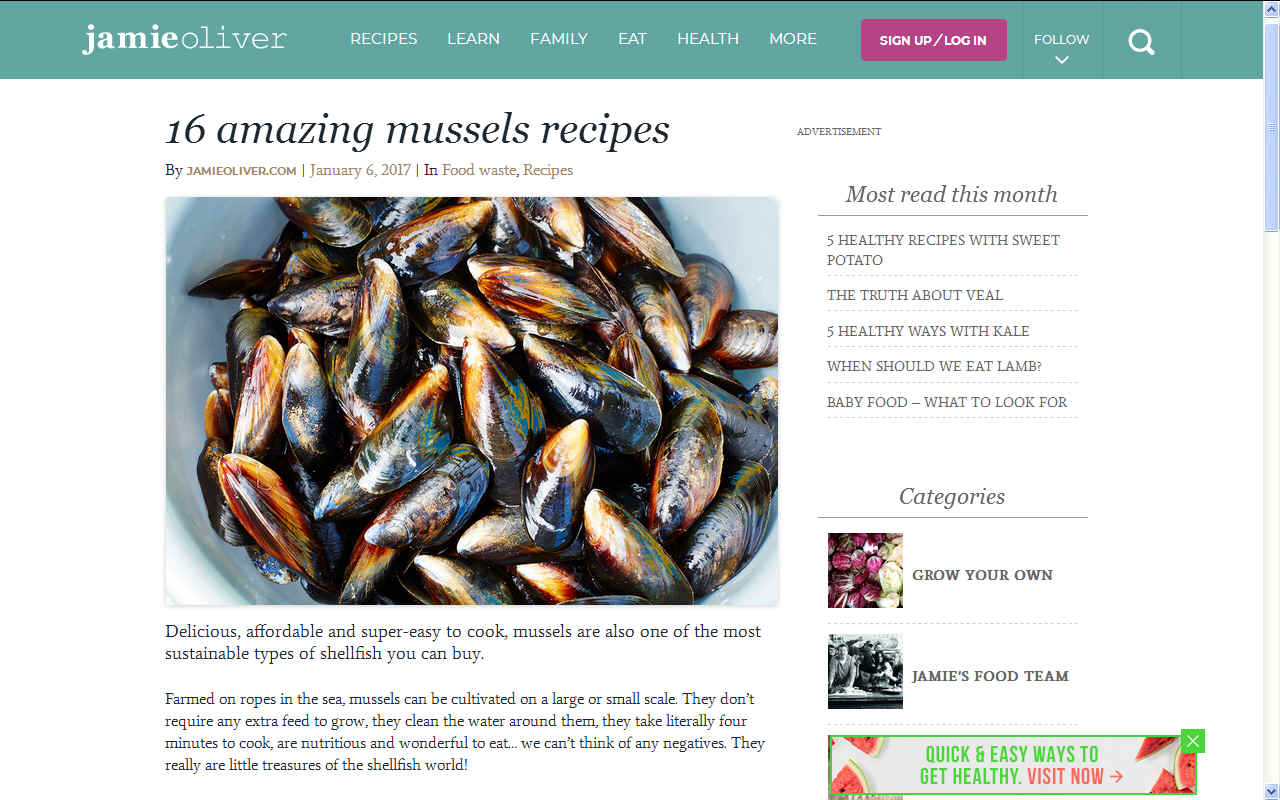
JAMIE
OLIVER
- Delicious, affordable and super-easy to cook, mussels are also one of the most sustainable types of shellfish you can buy.
Farmed on ropes in the sea, mussels can be cultivated on a large or small scale. They don’t require any extra feed to grow, they clean the water around them, they take literally four minutes to cook, are nutritious and wonderful to eat… we can’t think of any negatives. They really are little treasures of the shellfish world!
The deliciously sweet and nutty meat is fantastic in a classic white wine and garlic sauce, but don’t forget there are hundreds of other delicious ways to enjoy this versatile treat.
FOOD PREPARATION & TOXICITY
Mussels can be smoked, boiled, steamed, roasted, barbecued or fried in butter or vegetable oil. As with all shellfish, except shrimp, mussels should be checked to ensure they are still alive just before they are cooked; enzymes quickly break down the meat and make them unpalatable or poisonous after dying or uncooked. Some mussels might contain toxins. A simple criterion is that live mussels, when in the
air, will shut tightly when disturbed. Open, unresponsive mussels are dead, and must be discarded. Unusually heavy, wild-caught, closed mussels may be discarded as they may contain only mud or sand. (They can be tested by slightly opening the shell halves.) A thorough rinse in water and removal of "the beard" is suggested.
Mussel shells usually open when cooked, revealing the cooked soft parts. Historically, it has been believed that after cooking all the mussels should have opened and those that have not are not safe to eat and should be discarded. However, according to marine biologist Nick Ruello, this advice may have arisen from an old, poorly researched cookbook's advice, which has now become an assumed truism for all shellfish. Ruello found 11.5% of all mussels failed to open during cooking, but when forced open, 100% were "both adequately cooked and safe to eat."
Although mussels are valued as food, mussel poisoning due to toxic planktonic organisms can be a danger along some coastlines. For instance, mussels should be avoided along the west coast of the United States during the warmer months. This poisoning is usually due to a bloom of dinoflagellates (red tides), which contain toxins. The dinoflagellates and their toxin are harmless to mussels, even when concentrated by the mussel's filter feeding, but if the mussels are consumed by humans, the concentrated toxins cause serious illness, such as paralytic shellfish poisoning. A person affected in this way after eating mussels is said to be musselled.

LINKS
& REFERENCE
https://www.fishforthought.co.uk/fresh-mussels-home-delivery.html
https://www.jamieoliver.com/news-and-features/features/16-amazing-mussels-recipes/
https://www.bbcgoodfood.com/glossary/mussels
http://www.msc.org/
https://en.wikipedia.org/wiki/Mussel

MARINE
LIFE - This humpback whale is one example of a magnificent
animal that is at the mercy of human
activity. Humans are for the most part unaware of the harm their fast-lane
lifestyles are causing. We aim to change that by doing all we
can to promote ocean
literacy. This includes spreading the news about foods
that are good for us and good for the ocean
economy.
Anchovies
| Bass
| Bream
| Catfish
| Clams
| Cod
Coley
| Crabs
| Crayfish
| Eels
| Grouper
| Haddock
| Hake
| Halibut
| Herring
| Jellyfish
Krill
| Lobster
| Mackerel
| Marlin
| Monkfish
| Mullet
| Mussels
| Oysters
| Perch
| Piranha |
Plaice
| Pollock
| Prawns
| Rays
| Sablefish
| Salmon
Sardines
| Scallops
| Sharks
| Shrimp
| Skate
| Sole
| Sprat
| Squid
| Sturgeon
| Swordfish
| Trout
| Tuna
| Turbot
| Whiting
This
website is provided on a free basis as a public information
service. Copyright © Cleaner
Oceans Foundation Ltd (COFL) (Company No: 4674774)
2022. Solar
Studios, BN271RF, United Kingdom.
COFL
is a charity without share capital.
|






